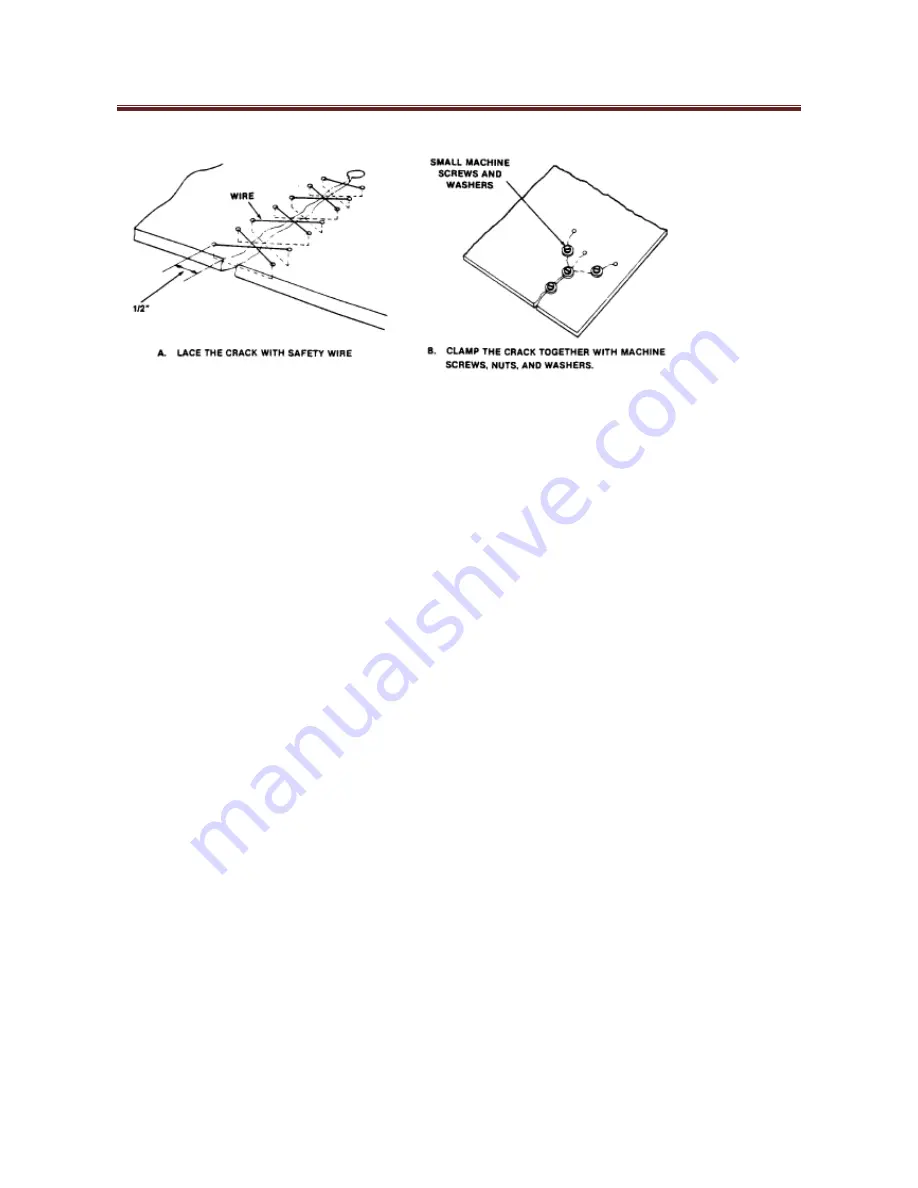
Zlin Aviation
Section 2
Maintenance Manual Line Maintenance, Repairs and Alterations
Issued: 01/02/2006
QAP-AMM-Rev02
Date of latest Revision: 23/01/2013
Page Number: 2-16
the stop-drilled hole. Allow the repair to dry for about 30 minutes, and then trim the rod off flush
with the sheet.
Polishing and Finishing.
Scratches and repair marks, within certain limitations, can be removed
from acrylic plastic. No sanding that could adversely affect the plastic’s optical properties and
distort the pilot’s vision should be done on any portion of a windshield.
(1)
If there are scratches or repair marks in an area that can be sanded, they may be removed
by first sanding the area. Use 320- or 400-grit abrasive paper that is wrapped around a felt or rubber
pad.
(2)
Use circular rubbing motions, light pressure, and a mild liquid soap solution as a lubricant. After
the sanding is complete, rinse the surface thoroughly with running water. Then, using a 500-grit
paper, continue to sand lightly. Keep moving to higher grit paper and sand and rinse until all of the
sanding or repair marks have been removed.
(3)
After using the finest abrasive paper, use rubbing compound and buff in a circular motion to
remove all traces of the sanding.
Cleaning.
Acrylic windshields and windows may be cleaned by washing them with mild soap and
running water. Rub the surface with your bare hands in a stream of water. Follow with the same
procedure but with soap and water. After the soap and dirt have been flushed away, dry the surface
with a soft, clean cloth or tissue and polish it with a windshield cleaner especially approved for use
on aircraft transparent plastics. These cleaners may be purchased through aircraft supply houses.
Waxing.
A thin coating of wax will fill any minute scratches that may be present and will cause
ain to form droplets that are easily blown away by the wind.
PROTECTION.
Acrylic windshields are often called “lifetime” windshields, to distinguish them
from those made of the much shorter-lived acetate material. However, even acrylic must be
rotected from the ravages of the elements.
a. When an aircraft is parked in direct sunlight,
the windshield will absorb heat and will actually
become hotter than either the inside of the aircraft or the outside air. The sun will cause the inside of
a closed aircraft to become extremely hot, and this heat is also absorbed by the plastic windshield.
b. To protect against this damage,
it is wise to keep the aircraft in a hangar. If this is not possible,
some type of shade should be provided to keep the sun from coming in direct contact with the
windshield. Some aircraft owners use a close-fitting, opaque, reflective








































